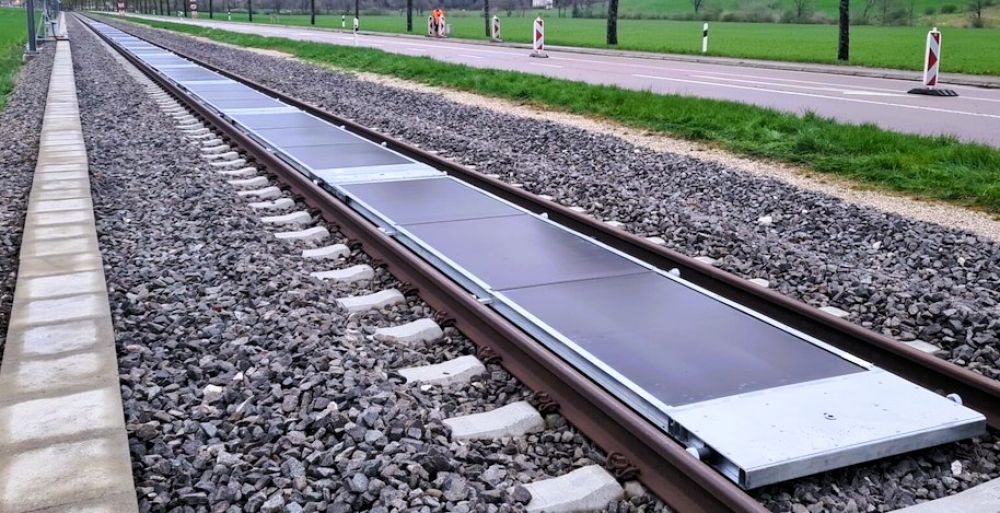51/25 Will Solar-Powered Train Tracks Work? Switzerland Green Energy Innovation
Posted 3 months ago
EXECUTIVE SUMMARY
Switzerland is testing an innovative idea: turning ordinary railway tracks into solar power stations. The pilot project by Swiss startup Sun-Ways will install removable solar panels between train rails to generate clean electricity without taking up extra land. This innovation could power homes, trains, and stations while using existing infrastructure more efficiently. Supporters call it a smart step toward a greener future, while critics worry about high costs, train dirt, and tough maintenance. Still, this bold solar railway experiment could set the stage for how countries worldwide blend renewable energy with everyday transport.
Swiss startup Sun-Ways has secured approval from the Federal Office of Transport (FOT) to pilot a solar power installation on active railway tracks, one of the world’s first of its kind. Set to begin in spring 2025, this ambitious project will span 100 meters of track operated by transN in the canton of Neuchâtel.
A Vision on the Rails
Sun-Ways plans to install 48 photovoltaic panels powered by specially engineered infrastructure within the narrow corridor between steel tracks. The panels are designed to be removable, anti-glare, and self-cleaning. Each train passing over them will keep them polished via onboard brushes.
The electricity generated—estimated at 16,000 kWh annually—can be directed three ways:
- Into the railway’s low-voltage network (for signals, stations, etc.).
- Into the local distribution grid.
- Into the traction energy network, potentially powering the locomotives themselves.
Though modest in scale, the project carries great potential. If scaled nationally across Switzerland’s rail network, it could yield up to 1 terawatt-hour annually, meeting roughly 2% of the country’s electricity demand.
Pros: Innovation Meets Pragmatism
Space optimization: Railway corridors represent otherwise underused land.
Adaptive design: The panels are removable, easing maintenance without disrupting train operations.
Built-in cleaning: Rolling cleaning brushes piggyback on trains to minimize dust accumulation.
Safety-conscious engineering: Anti-glare coatings are applied to protect crew visibility and operational safety.
Incremental deployment: The pilot allows data collection and refinement before scaling up.
Challenges and Concerns
Critics are vocal about the idea’s practicality:
“Between the fluids and debris that fall off of trains and the dust they kick up, the panels will be broken and inefficient.”
“Cost and maintenance kill that idea... You're better off putting the panels where they are out of the way and easily accessible.”
Main concerns include:
- Exposure to grime and debris from passing trains could impair performance.
- Orientation inefficiency: Flat-mounted panels between rails may collect less sunlight than tilted installations.
- Maintenance complications: Panels could hinder routine track upkeep or require frequent removal.
- Environmental wear: Snow, dust, and vibrations raise concerns about durability, especially in winter climates.
Optimistic Look
The three-year pilot, budgeted at approximately CHF 585,000 (around USD 708,700), will be closely monitored for real-world performance.
This initiative could pave the way for broader adoption in Switzerland and globally. It represents a promising strategy for integrating sustainable energy and transport infrastructure without demanding new land or dramatic construction.
Additional Reading:
1. Switzerland Pilots First Solar Power Plant on Active Railway Tracks - EcoWatch
2. Switzerland turns train tracks into solar power plants - SWI swissinfo.ch




